The Stringed Instrument Database
N

Ngoni
Alternative names: Xalam, Khalam, Teherdent, Gambare, Molo.
Origin: Throughout Central and Western Africa.
Tuning: C5, D4, G4, D5 is common for 4 string varities. C4, C5, G4, D5, G5, E5, F5 or C4, C5, D4, G4, D5, E5, F5 are common for 7 string varities. There are many tunings however.
Strings/Courses: 4/4 and 7/7 are common, but others exist. The courses are always single.
Further notes: Nylon strings, often fishing wire. The larger ones are called 'Ngoni Ba', while the smaller ones are called 'Ngoni Micin'.
Scale Length: Huge variation.
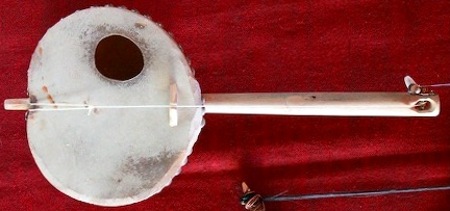
Njarka
Alternative names: Goje.
Origin: Mali.
Tuning: The string is tuned to the player's vocal range.
Strings/Courses: 1/1
Further notes:
Scale Length:

Nyckelharpa
Alternative names:
Origin: Sweden, medieval period.
Tuning: C, G, C, A
Strings/Courses: 4/4
Further notes: Swedish for 'key harp'. 4 melody strings and several sympathetic strings. Steel strings.
Scale Length: 340-350mm
O
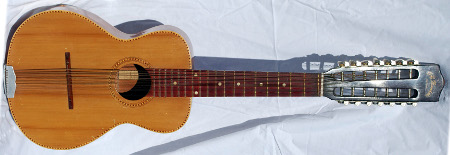
Octavina
Alternative names:
Origin: The Philippines, during Spanish colonisation (1521-1898)
Tuning: F#2, B2 B2, E3 E3, A3 A3 A3, D4 D4 D4, G4 G4 G4.
Strings/Courses: 14/6
Further notes: Evolved from the Spanish Laud. Steel strings.
Scale Length: 495mm
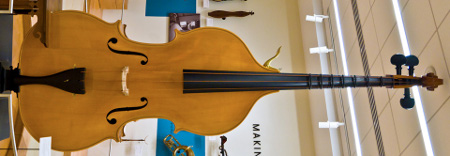
Octobass
Alternative names: Octobasse (French name).
Origin: France, about 1850.
Tuning: C0, G0, C1 or C0, G0, D1
Strings/Courses: 3/3
Further notes:
Scale Length:
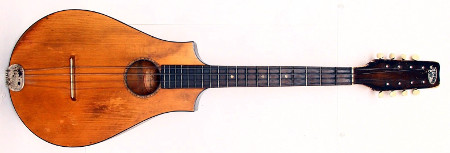
Octofone
Alternative names: Octophone
Origin: USA, 1920's.
Tuning: G2 G2, D3 D3, A3 A3, E4 E4 or C3 C3, G3 G3, D4 D4, A4 A4 or D3 D3, G3 G3, B3 B3, E4 E4.
Strings/Courses: 8/4
Further notes: Steel strings. Sometimes the lower two courses are tuned in octaves, especially with the fifths tunings.
Scale Length: 530mm
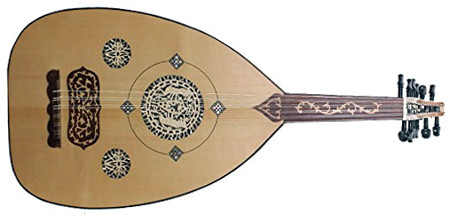
Oud
Alternative names: Ud, Al-ud, Oud Sharqi (as opposed to the Oud Arbi), Barbat (In Iran) - see under Barbat for Iranian variant.
Origin: Middle East, over 5000 years ago.
Tuning: D2, G2 G2, A2 A2, D3 D3, G3 G3, C4 C4.
Strings/Courses: Usually 11/6, but sometimes 13/7 or 10/5
Further notes: There are also Iraqi Ouds with 13 strings, adding an extra higher course to the Arabic type, and Egyptian Ouds without the single lowest course. Nylon strings.
Scale Length: 600-620mm for the Arabic oud. There is however quite a wide range used by different luthiers.
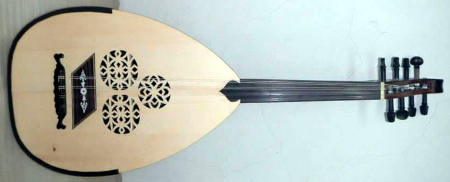
Oud Arbi
Alternative names: Oud Ramal
Origin: Tunisia, Morocco and Algeria.
Tuning:
Strings/Courses: 8/4
Further notes: Not to be confused with the similar Kwitra from Algeria.
Scale Length:
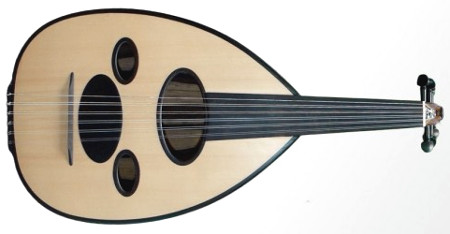
Oud Bashir
Alternative names: Iraqi Oud, Ud Bashir
Origin: Iraq
Tuning: C#2, F#2 F#2, B2 B2, E3 E3, A3 A3, D4 D4
Strings/Courses: 11/6 or 12/6
Further notes: Has a floating bridge and open soundholes. Developed in Iraq and made famous by the Oud player Munir Bashir.
Scale Length: About 600mm
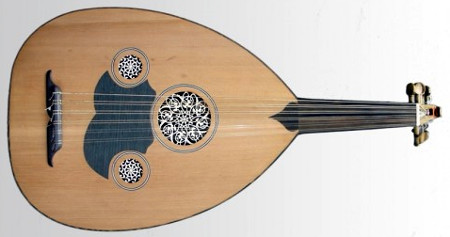
Oud, Turkish
Alternative names: Ud
Origin: Middle East, over 5000 years ago.
Tuning: C#2, F#2 F#2, B2 B2, E3 E3, A3 A3, D4 D4
Strings/Courses: 11/6
Further notes:
Scale Length: 580-590mm for the Turkish oud. There is however quite a wide range used by different luthiers.
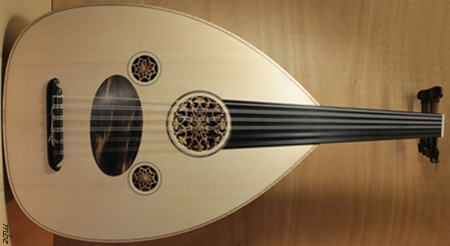
Oud, Zenne
Alternative names:
Origin: Middle East, over 5000 years ago.
Tuning: C#2, F#2 F#2, B2 B2, E3 E3, A3 A3, D4 D4
Strings/Courses: 11/6
Further notes: Smaller version of the oud, often played by those with smaller hands or who want a smaller bodied instrument.
Scale Length: 540-570

Orutu
Alternative names:
Origin: Western Kenya.
Tuning: No standard.
Strings/Courses: 1/1
Further notes:
Scale Length: No standard.